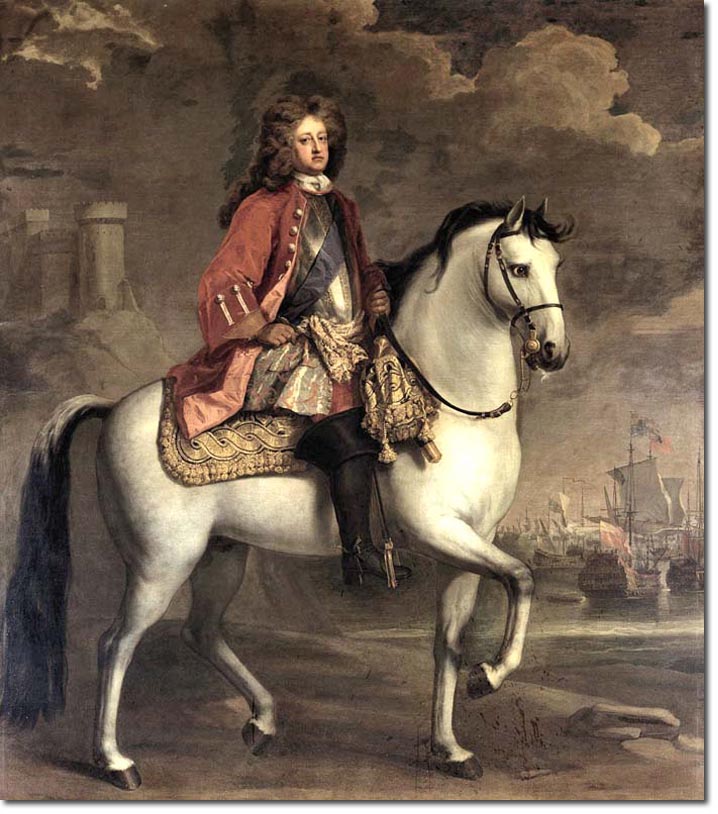|
|


|
|
Prince George was born on 2nd April 1653 in Copenhagen castle. He was the younger son of King Frederick III of Denmark and Norway. His mother was Sophie, sister of Ernest Augustus, Duke of Brunswick-Luneburg, later Elector of Hanover. When his father died in 1670 George's elder brother Christian became King. He had military training and at the battle of Landskrona in July 1677 King Christian was captured by the Swedes but rescued by George who cut his way through the enemy at great risk to his life.
His marriage to Anne the daughter of James, Duke of York, was arranged by her uncle Charles II as it was regarded as a way of strengthening the Anglo-Danish alliance against the Dutch Republic. Charles famously said of George, "I have tried him drunk and I have tried him sober and there is nothing in him." James was happy with the arrangement even though George was a Protestant. They married on 28th July 1683 and lived in the Palace of Whitehall where Downing Street now stands. George was not ambitious and liked the quiet life. Anne, who was 12 years younger, became pregnant 17 times but they either miscarried or died young. Despite all the sadness this caused they were devoted to each other. He and William of Orange did not get on with each other and when William was in the process of coming to England to Depose King James, George was obliged to be loyal to his father-in law, but as officers and retainers deserted James, George would exclaim "Est-il possible?!" each time. James referred to him as Est-il possible so that when George finally defected on 24th Nov 1688 James said "So Est-il possible is gone too". When William and Mary became joint monarchs, Anne, sister to Mary, became the heir presumptive. In 1689 George was naturalised as British and created Duke of Cumberland. He was also appointed Colonel-in-Chief of the Holland Regiment (The Buffs) which was renamed Prince George of Denmark's Regiment. In 1702 William died and Anne became Queen. George was husband of the Queen but was not made King Consort. He was appointed Lord High Admiral on 20th May 1702. As a Lutheran non-conformist he never became a member of the Church of England. This caused some problem when he was forced to vote in the House of Lords for a measure that restricted non-conformists from public office. He suffered from asthma and died of dropsy on 28th Oct 1708 at Kensington Palace. Queen Anne was devastated and refused to leave his dead body. Anne's relationship with Sarah, Duchess of Marlborough deteriorated when the Duchess removed a portrait of George from the Queen's bedchamber, insisting that it would be bad for Anne to have reminders of her deceased husband. He was buried in Westminster Abbey on 13th Nov. Historically he has been regarded as a weak individual. Queen Victoria hoped her own husband Albert would never play a subordinate role like "the very stupid and insignificant husband of Queen Anne." Despite the poor opinion that people had of him he was effective as a husband to the Queen, supporting her in everything. He did not try to form a separate power base and was quite happy to make model ships instead of being involved in political intrigue. The equestrian portrait is by Michael Dahl, dated 1704 and is in the Royal Collection. |
Regimental Details | Commander in Chiefs
Armed Forces | Art and Culture | Articles | Biographies | Colonies | Discussion | Glossary | Home | Library | Links | Map Room | Sources and Media | Science and Technology | Search | Student Zone | Timelines | TV & Film | Wargames